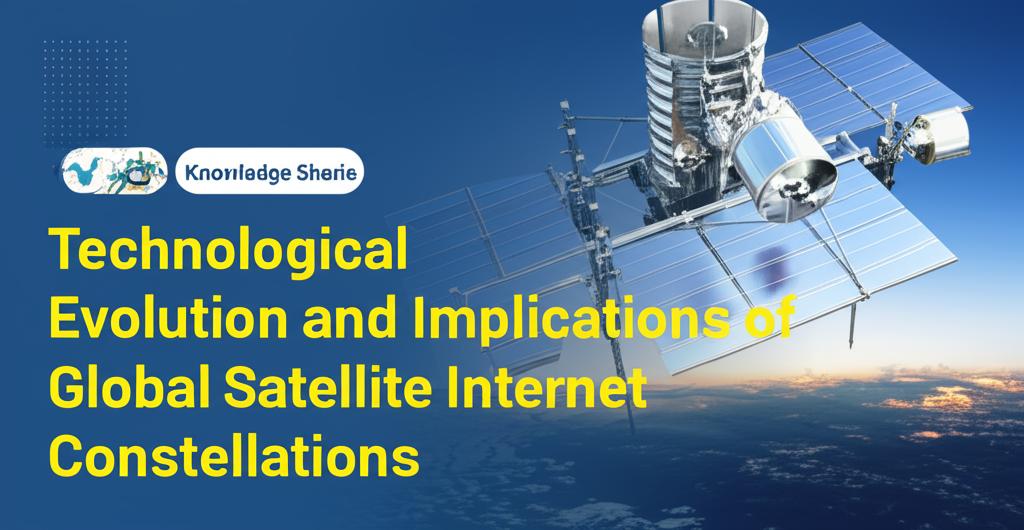The landscape of global internet connectivity is undergoing a seismic shift, driven by the rapid technological evolution of satellite internet constellations. These networks, comprised of hundreds or even thousands of Low Earth Orbit (LEO) satellites, promise to deliver high-speed, low-latency internet access to virtually every corner of the globe, from remote and underserved regions to bustling urban centers. This technological leap carries significant geopolitical implications, reshaping digital sovereignty, national security, and the global economic balance of power.
The current frontrunner in this new space race is SpaceX's Starlink, which has already deployed thousands of satellites and is providing service in over 100 countries as of early 2025. Starlink boasts download speeds of 50-220 Mbps with latency as low as 20-30 ms, making it a viable alternative to terrestrial broadband. The company continues to expand its global footprint and is beta testing "Direct-to-Cell" technology, aiming to connect mobile phones directly to satellites for cellular service anywhere on Earth.
However, Starlink is not without competition. Amazon's Project Kuiper is a major contender, planning to launch its first production satellites in early 2025 and deploy over 3,200 satellites by 2029. OneWeb, now part of Eutelsat Group, has nearly completed its LEO constellation and is partnering with telecom providers to expand its reach. China is also a significant player, with state-backed initiatives like the GuoWang constellation aiming for over 13,000 satellites and projects like SpaceSail's "Thousand Sails" (Qianfan) constellation planning for up to 15,000 satellites by 2030. Other nations and blocs, including the European Union with its IRIS² project and India, are also actively developing their own satellite internet capabilities.
This proliferation of satellite mega-constellations is made possible by several technological advancements. The use of LEO satellites, orbiting much closer to Earth (typically between 300 km and 1,200 km), significantly reduces latency compared to traditional geostationary (GEO) satellites. Innovations in satellite design, such as smaller, lighter satellites (often under 500 kg), phased-array antennas for beam steering, and inter-satellite laser links for efficient data relay, are crucial. Furthermore, reusable rocket technology, like SpaceX's Falcon 9, and mass deployment strategies have dramatically reduced launch costs.
The geopolitical implications of these global satellite internet constellations are profound. They offer the potential to bridge the digital divide, providing connectivity to remote and underserved populations and boosting education, healthcare, and economic opportunities. For instance, Starlink is already being used to provide connectivity solutions in African countries like Rwanda, aiding in areas like education.
However, the rise of these constellations also raises concerns about digital sovereignty and national security. The ability of private companies, and by extension their host nations, to control global internet infrastructure is a significant strategic consideration. This has led to what some call "techno-nationalism," where countries invest heavily in their own satellite networks to ensure access and avoid dependence on foreign providers. The dual-use nature of this technology, with potential military applications for communication, reconnaissance, and targeting, further complicates the geopolitical landscape. The Ukraine conflict has highlighted the strategic importance of satellite internet, with Starlink playing a pivotal role in maintaining connectivity for Ukrainian forces.
Regulatory challenges also abound. Issues such as spectrum allocation, orbital slot management, and preventing radio frequency interference require international cooperation and robust governance frameworks. The increasing number of satellites also raises concerns about space debris and its potential impact on astronomical observations. Furthermore, national governments are grappling with how to regulate these global services, balancing the benefits of connectivity with concerns over data privacy, security, and control over information flow. Some nations have even pushed back against services like Starlink, seeking to maintain control over internet access within their borders.
Looking ahead, the satellite internet market is projected for significant growth, with the global space economy potentially reaching $1 trillion by 2040, and satellite internet expected to account for a substantial portion. Continued technological advancements are anticipated, including direct-to-device services, closer integration with 5G and IoT networks, and the use of AI for network optimization. The competition among providers is expected to drive down costs and improve service quality.
However, challenges remain, including the high initial cost of user terminals, potential weather interference affecting signal quality, and ensuring the long-term financial viability of these massive Nmental sustainability concerns related to the proliferation of satellites also need careful consideration. Ultimately, the evolution of global satellite internet constellations presents both immense opportunities for enhanced global connectivity and complex geopolitical and regulatory hurdles that will require careful navigation in the years to come.

